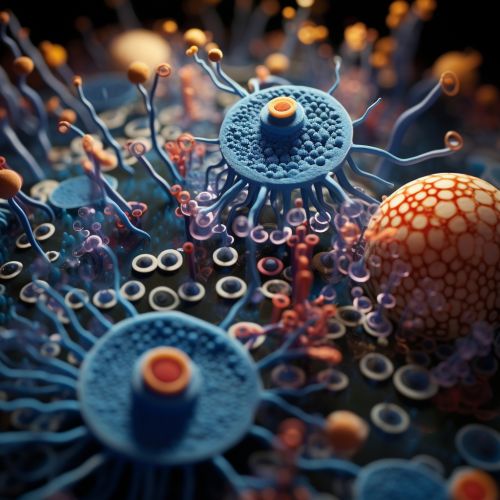Prokaryotes
Introduction
Prokaryotes are a group of organisms that lack a cell nucleus (nucleus), or any other membrane-bound organelles. They are among the earliest forms of life on Earth, and still make up a significant portion of the planet's biomass and total genetic diversity.
Classification
Prokaryotes are divided into two domains: Bacteria and Archaea. These two groups were once classified together as a single kingdom, but are now recognized as distinct due to differences in their genetic sequences and metabolic processes.
Structure
Prokaryotes are typically unicellular organisms, although some species form colonies or filaments. Unlike eukaryotic cells, prokaryotic cells are not divided into separate compartments by internal membranes. Instead, all of the cell's metabolic functions take place in the cytoplasm.


Metabolism
Prokaryotes exhibit a wide range of metabolic strategies, including phototrophy, chemotrophy, autotrophy, and heterotrophy. This metabolic diversity allows prokaryotes to inhabit a wide range of environments, from the human gut to deep-sea hydrothermal vents.
Reproduction
Prokaryotes reproduce asexually through a process known as binary fission. Some prokaryotes can also exchange genetic material through a process known as horizontal gene transfer, which can lead to rapid evolution and adaptation to new environments.
Role in the Ecosystem
Prokaryotes play a crucial role in many ecosystems, serving as primary producers, decomposers, and symbionts. They are also important in the cycling of nutrients, including carbon, nitrogen, and sulfur.
Human Interaction
Prokaryotes have a complex relationship with humans. Some species are pathogenic, causing diseases such as tuberculosis and cholera. However, many other species are beneficial, aiding in digestion, producing vitamins, and protecting against harmful microbes.
Evolution
Prokaryotes are believed to have evolved around 3.5 billion years ago, making them one of the oldest forms of life on Earth. They are thought to have given rise to eukaryotes, the other major group of organisms, through a process known as endosymbiosis.
